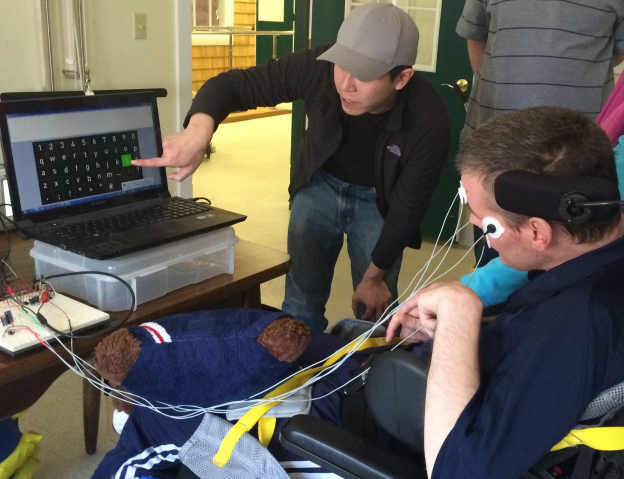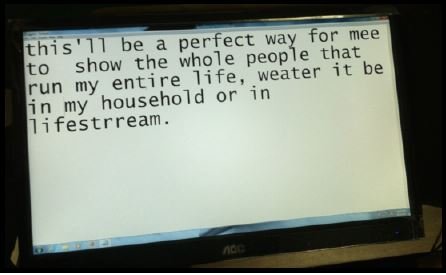EOG Project


The Need
There are currently about 50,000 people with locked-in syndrome (LIS) in the United States. Locked-in-syndrome is a condition that results in complete paralysis with the exception of the eyes. This condition reduces the patient’s ability to communicate with the outside world using conventional methods. The current communication methods for these patients are limited, time consuming, and dependent on other individuals.
The Project
Our goal was to build a system that allows the user to express approximately 1.25 words per minute, which is twice as fast as the current best approach, partner-assisted scanning. Our system uses a computer to run an on-screen keyboard application. Our system uses a clinical measuring technique called electrooculography, or EOG. The technique relies on the physiological property that the front of a person’s eyes is more positively charged than the back of the eyes.
We use this standing voltage difference, called the corneo retinal potential, to determine which way the uses his or her eyes. By looking at the desired character on the screen and then blinking, letters can be selected. Our GUI keyboard application contains letters A-Z and numbers 0-9 as well as common punctuation, text-to speech functionality, and saving to a text file.
Current Status
This project was tested by John, an individual with locked-in syndrome, who is supported by Lifestream. He was able to type a paragraph of text much more quickly and without the help of a support staff member. The project also won second prize in NU’s Capstone Design Competition.

